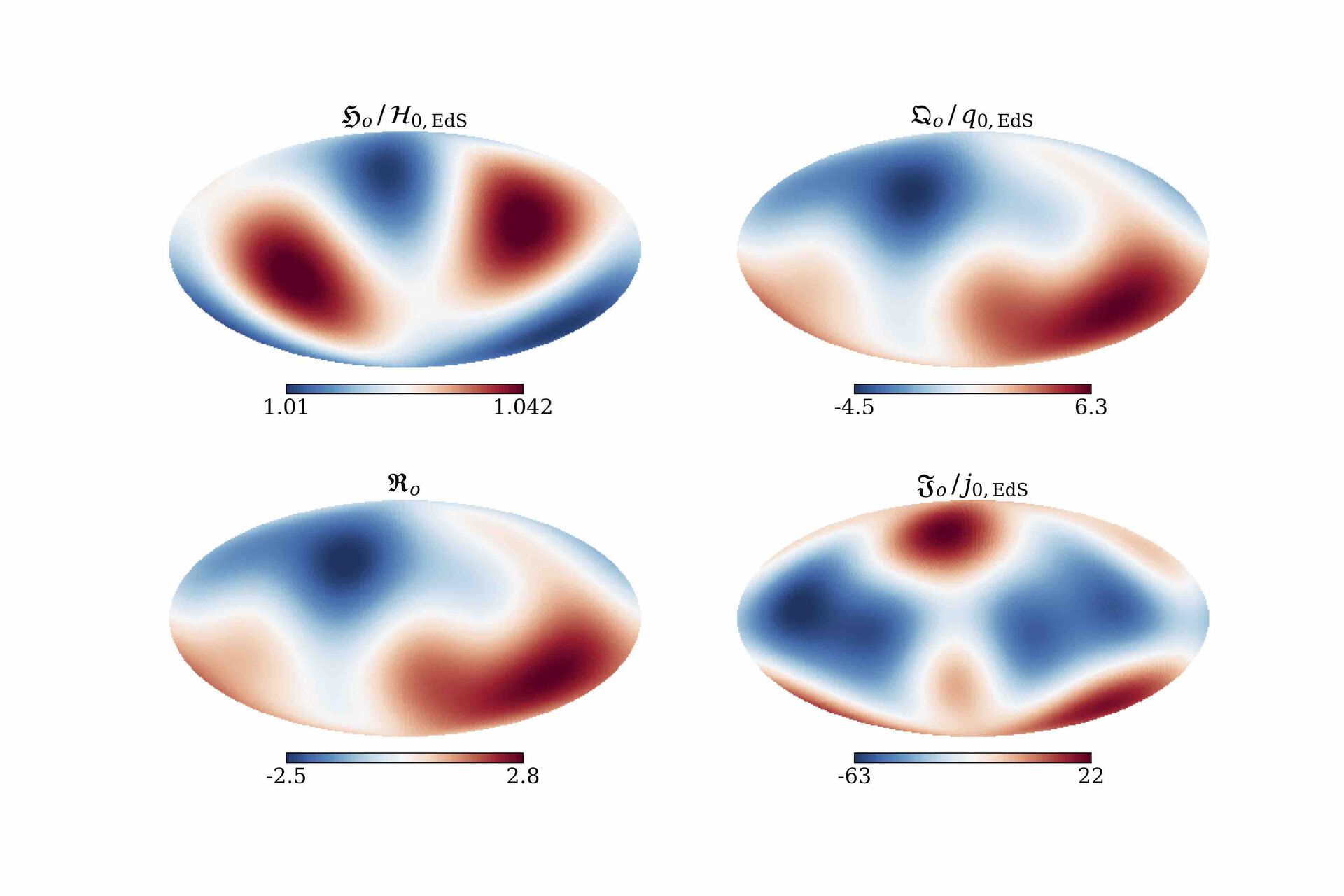Most cosmological data analysis today relies on the Friedmann-Lemaitre-Robertson-Walker (FLRW) metric, providing the basis of the current standard cosmological model. Within this framework, interesting tensions between our increasingly precise data and theoretical predictions are coming to light. It is therefore reasonable to explore the potential for cosmological analysis outside of the exact FLRW cosmological framework. I will discuss our recent work using Heinesen's new generalised luminosity-distance series expansion in redshift, which contains no assumptions of homogeneity or isotropy. This framework will allow for a full model-independent analysis of near-future low-redshift cosmological surveys. I will present our calculations of the anisotropy in the effective observational 'Hubble', 'deceleration', 'curvature' and 'jerk' parameters in cosmological simulations using numerical relativity, i.e. free of any background cosmology.
We find the cosmic variance of the Hubble parameter consistent with previous studies. However, on top of this, typical observers in our simulations measure ~7% variance in the Hubble parameter across their sky, and ~ 850% variance for the deceleration parameter on scales of 100 Mpc/h. These local anisotropies could impact results using low-redshift data without fair sky coverage. Our results suggest the consideration of low-redshift anisotropy in cosmological analysis could be important for drawing correct conclusions about global properties of the Universe. I will also discuss preliminary results investigating low-redshift anisotropies using ray tracing in full general relativity.

